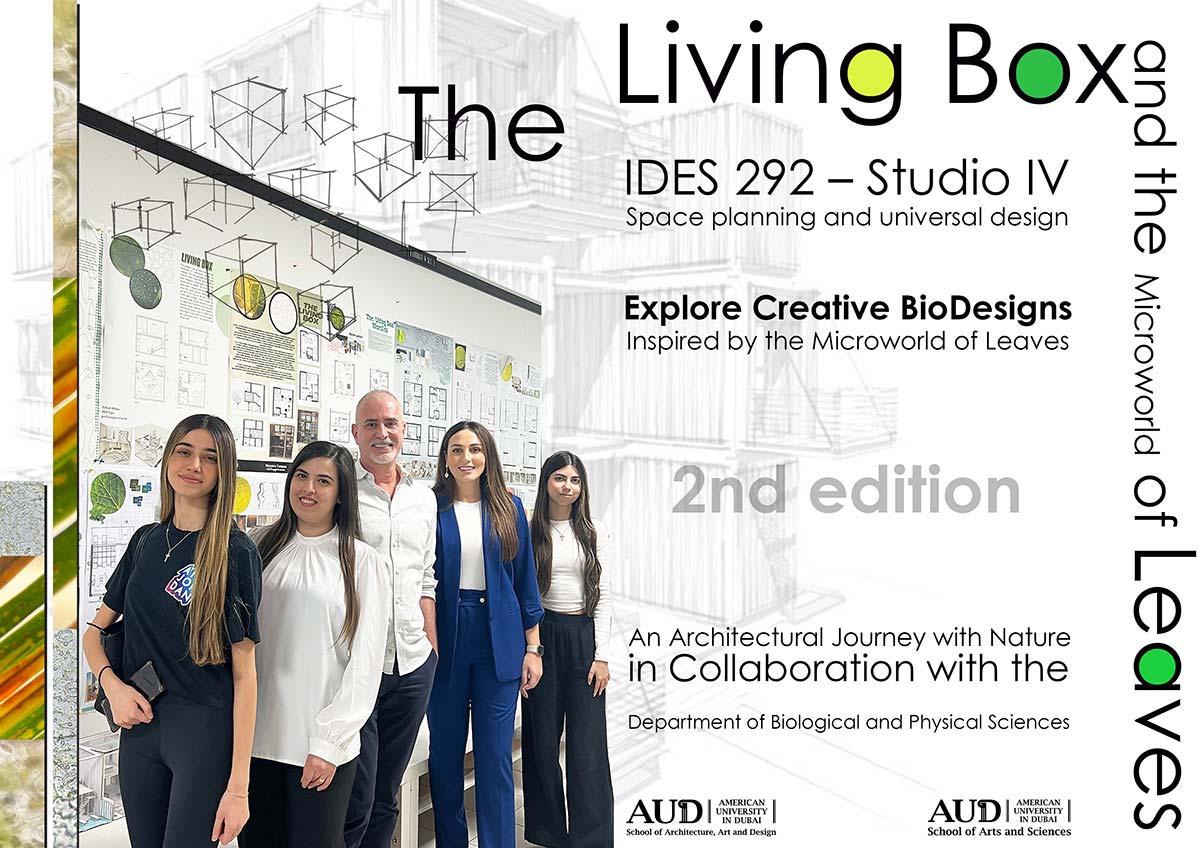
Discover the captivating blend of art and science in 'The Living Box and The Microworld of Leaves' project, a collaboration between interior design and biology at AUD. Led by Mr. Chadi El Tabbah in the IDES 292 – Studio IV course, this initiative explores innovative design solutions inspired by nature's intricate leaf patterns and textures, supported by Dr. Muriel T. Zaatar, Chair of the Department of Biological and Physical Sciences, the project aims to harmonize human comfort with organic inspiration and offers a canvas for creativity within its dimensions, space planning and human factors are studied and implemented to serve the needs of the client.
Mr. Chadi El Tabbah believes that each person in his classroom is a unique individual, his desire as an educator to help students meet their fullest potential urge him to create innovative projects with the notion that education is imperative to maintain a respect for human life, as he is specialised in space panning and universal design, he initiates design solutions, this time, was a successful collaboration with the department of Biology where he led the students into a journey of innovation. It all starts at the Biology lab; under the lenses of the microscopes, students explore the magnifications of the nature patterns found in diverse leaves, the repetition of the patterns inspire the students to design The Living Box.

The preliminary design phase consists of data collection, such as interviews, narrative, design statement, space planning and the mood boards, on a later stage, students implement their findings into technical drawings, material and furniture specifications, and a conceptual model to reflect the proportion of spaces. Evidence-based design is observed.
The objective of this project is to focus on spatial organization, circulations, application of human factors, ergonomics, and anthropometrical considerations to design solutions in residential spaces. Also, on human-centered design by applying knowledge of individuals' experience and behavior to design the built environment. The students’ overall presentations display evidence of creativity and innovations with creative special solutions and other evidence of comprehensive critical thinking in consideration of human factors and evidence-based design.